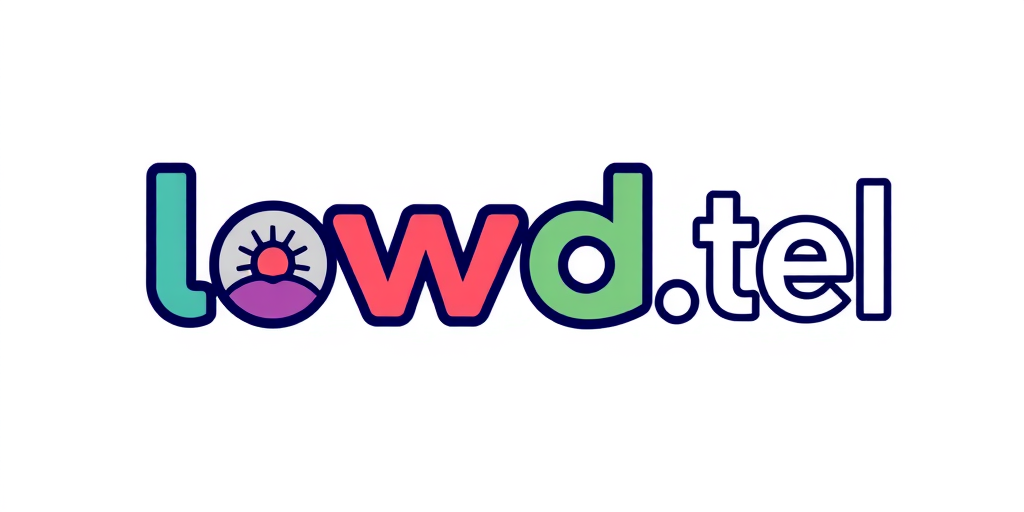

News
Jose Mourinho Shows Interest in Sport Lisboa e Benfica Managerial Position

James Clark
17 Sep 2025

News
National Freedom ‘Under Threat’ States Merz as He Cautions Against ‘Forced Settlement’ in Ukraine
By James Clark
• 17 Sep 2025

News
American Sports Player Taylor Townsend Apologizes for ‘Offensive’ Comments on Traditional Cuisine
By James Clark
• 17 Sep 2025
Featured Story

News
The German Giants Plan to Force Chelsea to Regret Allowing Jackson Leave in High-Stakes Encounter

James Clark
17 Sep 2025
Today's Top Highlights
Stay updated with the latest insights and trends in online gaming
News
 READ MORE
READ MORE
Pioneering Chefs: Transforming Isle of Mull's Culinary Culture

James Clark
17 Sep 2025
News
 READ MORE
READ MORE
The Ice Cream Giant's Founding Partner Departs Amid Social Activism Controversy

James Clark
17 Sep 2025
News
 READ MORE
READ MORE
I Was a Gobby Teen That Thrived to Succeed. Then I Lost a Competition – and Found the Real Me.

James Clark
17 Sep 2025
Esports
 READ MORE
READ MORE
Tips for High Rollers: Hitting the Jackpot in Internet Gambling

James Clark
17 Sep 2025
News
 READ MORE
READ MORE
UEFA Champions League First Appearance and Veteran Star - The Meteoric Rise of Pafos FC

James Clark
17 Sep 2025
News
 READ MORE
READ MORE
Arsenal and Tottenham Claim Victories as Champions League Action Resumes

James Clark
17 Sep 2025
News
 READ MORE
READ MORE
Regarding Substances by the Philosopher: An Intellectual Exploration into Mind-Altering Compounds

James Clark
17 Sep 2025
News
 READ MORE
READ MORE
Organize as you go and take your time: key steps to emptying a loved one’s house when they die

James Clark
17 Sep 2025
News
 READ MORE
READ MORE
Keir Starmer Bets Everything on an United States That Is Now a Thing of the Past

James Clark
17 Sep 2025
News
 READ MORE
READ MORE
High Potential Second Season Analysis – A Cosy, Heartwarming Cop Show Featuring a Nearly Flawless Detective

James Clark
17 Sep 2025
September 2025 Blog Roll
- nhà cái 23win
- tải app 58win
- Kubet77
- https://go8.digital/
- xo88
- tx88
- avis casino en ligne
- EV 88
- best online casino New York recommended by psu.com
- best crypto to buy
- top 10 nhà cái uy tín nhất hiện nay
- non gamstop casinos
- nổ hũ đổi thưởng
- bestes casino
- https://lc88comm.com/
- https://gem88.de.com/
- https://fb88.day/
- https://w88link3.com/
- https://w88link2.com/
- situs toto
- https://five88.kitchen/
- https://5mb.icu/
- https://5mb.gg/
- https://5mb.io/
- https://5mb.es/
- seriöses online casino deutschland
- 5MB.COM
- Casino 78win
- iwin app
- rikvip club
- rikvip club
- bk8 app
- bk8 app
- nhà cái 8xbet
- gem88.sarl
- gem88.ph
- https://kuwinn.app
- 13 win
- 8s.
- xx88.asia
- zona66
- liên minh okwin
- boast
- http://tx88.one/
- top 10 online casinos in canada
- best canadian online casinos
- casino bonus canada
- casinos online canada
- online casinos in canada
- Miso88e.org
- go8 game
- canadian online casino
- F8BET
- pgsoft
- 789win club
- Sun win
- Fs bet
- https://leo88.com/
- XX88
- toto slot
- https://luongsontv.in/
- xlbola
- top 10 online casinos
- 8k bet
- casinos legais em portugal
- SBOTOP
- skor88
- betaslot777
- 納豆 英語
- slot gacor
- https://58win79.com/
August 2025 Blog Roll
- api66 login
- 航海日誌 使い方
- hm88
- https://www.addictologie.org/
- J88
- 8kbet.com
- https://topnhacai.to/
- zenostogel
- https://23win.select/
- QQ 88
- https://keonhacai.camp/
- casino en ligne France
- 58win
- Thabet
- nohu
- U888 link
- 77WIN
- 68gamebai
- MALUKU4D
- bet 88
- https://bkk.win/
- bet88
- https://mitosbola.com
- onbet
- https://wanj88.com/
- https://fb88.locker/
- F168.COM
- E2BET
- W88
- qh88
- まる さとし
- ALO789
- casino en ligne fiable
- tigerasia88
- storiesofahouse
- https://uu88.locker/
- BET88
- pg88.com
- situs sbobet
- fb88 legal
- XX88
- https://rr88.shopping/
- dwvgaming
- DA88
- https://rr888.mobi/
- server aloha4d
- trang chủ okwin
- okvipp online
- BJ88
- casinon utan svensk licens
- 58WIN
- 69 VN
- P3 casino
- Dominobet88
- https://hi88s.com/
- aialgox
- https://ww88.supply/
- bbikinimassage
- uus777
- 98win
- https://33winpk.com/
- https://thabett.club/
- cpc2888
- aslotre
- 8kbet
- NAGAHOKI303
- https://thabet.movie/
- https://pg99bz.com/
- https://gamesnohu.com/
- bắn cá xx88
- https://32win1.dev/
- Trang game giải trí
- 8kbettt.co
- kentucky derby sportsbooks
- 먹튀폴리스
- ordinary-gentlemen
- https://pg88vn.tokyo/
- https://kkwin.tech/
- doyan5
- https://keonhacai7.com/
- nohu90m.net
- bondan69
- https://7m-thailand.com/
- https://sunwinners.com/
- OKKING
- Mbak4d
- Slot 5000
- Aleeyjourney
- https://33win100.com/
- https://nohu.business/
- 32win
- i9bet
- hi88com biz
- Trang Chủ VMAX
- 58WIN
- https://sip777.it.com/
- poker88
- RIKVIP
- HUBET
- nhà cái ok365
- situs togel
- Bet88
- https://789winjj.com/
- u888.com
- https://32win1.biz/
- đăng ký mm88
- 69vnnn org
- SV388
- tattooart
- paraparkcluj
- เว็บสล็อต666
- PG99
- pg88
- hi88 biz
- Singapore sports betting
- https://s666j.net/
- お 台場 無料 巡回 バス
- https://bet88vn.in/
- Lucky88
- GK88
- https://mm88.directory/
- ww88.com
- 32win
- https://go8.skin/
- QQ88 nổ hũ
- casinon som inte omfattas av spelpaus
- Slot Shopeepay
- gelora188
- okvipp.online
- Ok365
- TIP88
- hoki777
- 789F
- signalmastermind
- https://ww88ac.com/
- Sports Betting UAE
- https://j88dd.com/
- ai meta hack
- 79king
- Situs Toto Togel
- slot777
- Jajantogel
- hi88o com
- เพิ่มยอดวิว
- https://13win.ski/
- VankhanhTV
- đăng ký Lucky88
- panutantoto
- 99ok
- link alternatif api88
- XX88
- https://33winer.com/
- xổ số shbet
- BET88
- jagoanspin
- nhà cái xx88
- https://hello880.net/
- TD 88
- homesecuritycamp
- casino en ligne France légal
- situs gacor88
- 9BET
- link vào 23win
- 33win com
- ダイソー 遮光 窓
- https://k8cc.faith/
- 123win
- XX88
- uu88 com
- https://lucky88.co.in/
- ABC8
- NHÀ CÁI 88BET
- https://789betviet.com/
- 33WIN
- overseas casinos
- kingbet188
- https://789bethp.com/
- uu88
- v9bet
- Hit77
- kingjr99
- BẮN CÁ ĐỔI THƯỞNG
- Cabinetdoorsfab
- https://mambiaccion.com/
- LUCK8
- 78WIN
- bk8
- https://u888bb.com/
- link toto
- slot gacor subuh ini
- https://789wintm.com/
- batik55
- 23win
- klikfifa
- 7m
- server aloha4d
- https://www.xx88.church/
- F8BET
- juliannayuri
- f8bet
- QQ 88
- mitra super scatter
- uu88 com
- generalblogposting
- qq88provip
- https://k8cc.uno/
- Nhà cái RR88
- mm88
- F168
- online casinos Australia
July 2025 Blog Roll
- slot oke sultan
- teratai888
- 32win com
- eslot
- https://pg88vn.lat/
- akun pro monaco
- Slot gacor
- dinasti555
- 8XX
- expertevaluation
- 23win
- https://king88.sh/
- romabet giriş
- server aloha4d
- nhà cái kubet
- đá gà thomo
- hi88 casino
- https://tylekeo.social/
- nohu
- Bsports
- operabola
- OK WIN
- lxtoto
- v9bet pro
- cwin
- trang chủ 188bet
- Nara4d
- https://king88va.com/
- https://TheMiddleFeastFoodTruck.com
- https://fb88.nexus/
- 69 VN
- Ku Casino
- dewagg
- https://b52club.autos/
- 789 bet
- situs judi bola
- ALO789
- 9BET
- link vào 13win
- Nhacaiuytin
- 블랙툰
- bigdewa login
- bet88go me
- nhà cái uy tín
- nhà cái uy tín
- 69 VN
- DA88
- https://k8cc.energy/
- Rubbetfast
- TK 88
- AX88
- slot gacor
- alaskatoto
- Truyenqq
- hb88
- สล็อต
- 8kbett.store
- beta138
- Kubet
- sigapbet
- cwin88k.info
- game bet88
- すし ざんまい 中野
- 789P
- slot online
- babystrollerhub
- garuda303
- OK 9
- 789 bet
- https://99oke.cc
- whatsapp网页版
- biblejournalingdigitally
- khuyến mãi km88
- 69vn
- deneme bonusu veren siteler
- bitcoin360app
- teenytinytails
- yuanpaygroup
- pigfacts
- E2BET
- kubet pizza
- 8kbet
- togel slot
- slot 4d
- https://58win.works/
- daftar situs slot
- https://32win11.net/
- Kubet
- 23win
- Nhà cái uy tín
- skw slot
- mantap 555
- トラッキング火災
- 69 VN
- 79king
- totobet 805
- mormotivation
- ai360soft
- bet 88
- miso88
- candu777
- KU BET
- DEWAHOKI303
- keonhacai
- Keciltoto
- https://789winx2.com/
- myaimastertool
- 온라인슬롯사이트
- 58win vip
- https://bet88.cooking/
- https://xin8891.com/
- dinasti555
- BJ88
- kèo nhà cái bet88
- https://tdtcviet.com/
- 58win
- https://fun88.party/
- Cổng game 28bet
- slot qris 5000
- Fun88
- สล็อตเว็บตรง168
- telegram 下载
- situs candu123
- 69 VN
- 69vn
- Togel Hongkong
- https://f8bett3.info/
- https://789pin.com/
- VN88
- สล็อต 789
- 8kbet
- https://pg88vn.my/
- domtoto
June 2025 Blog Roll
- td88
- bet888
- 88CLB
- xin88
- rr882 net
- jayaslot
- King88
- najbolje online kladionice
- koinvegas
- advicepoints
- ugbet88
- pg99.band
- LUCK8
- QQ88
- qh88
- 실시간카지노사이트
- https://j88plus.com/
- dunia777
- betvnd
- diploma kopen
- Vortexhubb
- naturefins
- 8KBET
- bet88net com
- u888
- สล็อต
- Tototogel
- data macau
- แทงหวย
- slot
- UU88
- trang chủ bet88
- uu88.com
- 8DAY
- mainaku
- https://nohu90.archi
- https://bet88com.live/
- 98win com
- https://68xbet.net/
- https://23win.limited/
- kuwin
- doyan5
- u888.com
- Kubet
- u888
- E2 BET
- 789P
- jkbet88
- https://789winab.com/
- betclub89
- wps官网
- nhà cái 69vn
- situs slot gacor
- 789win
- doyan5
- lantai6
- Jun88 com
- E2BET
- xoso66
- pengeluaran macau
- planyourhome
- PESIARBET
- dewahub
- ufapro888
- slot88
- QQ 88
- ジン 車
- bit360soft
- https://88clbbb.com/
- hamtoto
- hii88
- uus777
- E2BET
- mpo slot
- 搜狗输入法下载
- สล็อตเว็บตรง168
- 23win com
- Nhà cái uy tín F168
- tunas4d
- akun dewa89
- DEDITOTO
- situs slot gacor
- https://kubetvn88.com/
- https://9bet.dev/
- https://joker123.onl/
- plataformamaisbrasil.org
- ww88
- AMARTOTO
- https://8kbett.studio/
- Judi Slot Online
- https://kuwin1.me/
- New88
- ALO789
- 8XBET
- MM88
- divingpicks
- slot gacor
- https://bj88.insure/
- i9bet
- thefitnessblogger
- https://88vvcom.net/
- https://www.69vn1a.com/
- New88
- https://km88game.com/
- https://j88cem.com/
- kitchenaid lead recall
- Nhà cái Jun88
- slot gacor
- asoftwarehub
- 68gamebai
- 555win
- TD88
- nhà cái kubet
- rr88
- slot gacor
Popular Post
Sponsored News

News
Israeli Forces Reveals Short-Term Safe Passage for Northern Gaza Inhabitants
 James Clark
James Clark

News
Overlooked Jackson's Initial Opportunity to Trouble Stamford Bridge
 James Clark
James Clark

News
The Retail Giant Relies on Women's Fashion to Revive Fall Sales
 James Clark
James Clark

News

News
The Environmental Commitment toward the Coming Year: Six Core Priorities
 James Clark
James Clark

